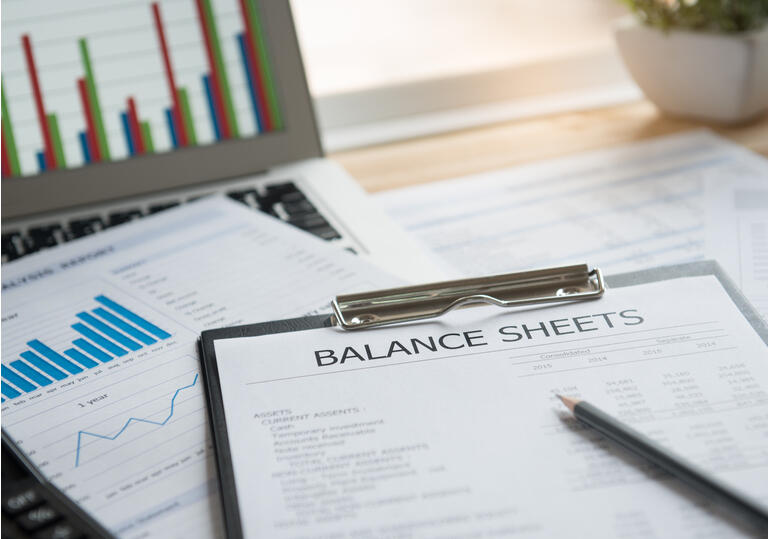What is working capital
Working capital is an accounting measure that refers to the amount of liquid assets that a business must deploy over the next 12 months compared to its short-term financial obligations for the same period. It indicates whether the reserve of money that a company has, or expects to receive, over the next year is sufficient to meet the short-term obligations that it also expects to meet during that time.
Working capital is calculated as part of a company’s balance sheet and includes the assets and liabilities of a business over the next 12 months. Although the equations for calculating working capital are straightforward, most businesses experience significant cash inflows and outflows, many of which have some degree of timing uncertainty. This makes working capital an ever-changing amount. However, keeping pace with its momentum is important for members of a company’s management and finance departments to ensure that they are using their cash efficiently and meeting their obligations.
The working capital that a business needs often depends on the industry and how things are made, paid for and sold in that industry. For example, businesses in seasonal industries may need more working capital early in the season, as they will not receive customer payments until later in the season. Considerable working capital might also be required by companies that need to take advantage of supplier discounts by buying or manufacturing in bulk to keep their margins low. To know how a company performs this measurement, it is important to compare its working capital to the average for its industry.
Bottom Line: Working capital is the amount a business has in short-term liquid assets after its short-term debts have been paid. It determines the immediate liquidity of a business and is often used to manage cash flow and for other forms of financial analysis.
Components of working capital
Current assets and liabilities are the two main components of working capital:
Current assets
The current assets of a business include all of its cash and cash equivalents, prepaid expenses, inventory expected to be sold within 12 months, marketable securities, supplies, accounts receivable, and assets it expects to be able to liquidate within 12 months.
It can also include less common assets like real estate that a business is about to sell or the cash value of life insurance. Current assets represent the amount of cash that a business has or will have to pay its expenses.
Current liabilities
The current liabilities of a company are all the obligations of the company that will mature within 12 months of the balance sheet date. This could include all debt payments owed, accounts payable, wages and payroll taxes, bills, other taxes, customer deposits, deferred income, and major purchases.
It could also include less common expenses like bank overdrafts, declared dividends, and judgments against a business. Current liabilities represent the total expenses that a business will have to pay over a 12-month period.
How working capital is calculated
The calculation of working capital is then done by subtracting liabilities from assets as follows:
Working capital = Current assets – Current liabilities
This equation finds a company’s current amount of working capital and is sometimes also called the net working capital formula.
However, net working capital can be calculated in other ways as well, depending on how a particular industry likes to view it. Alternative net working capital formulas include:
Net working capital = Current assets (less cash) – Current liabilities (less debt);
and
Net working capital = accounts receivable + inventory – accounts payable
A business finance manager may also want to know the company’s working capital relative to the size of its liabilities to understand the strength of a company’s working capital relative to its expenses. For this, a working capital ratio can also be calculated. The equation for this calculation is:
Working capital ratio = Current assets / Current liabilities
The working capital ratio (also called the Current ratio) provides the percentage of the excess or deficit of working capital over its liabilities or assets. For example, if a business has $ 100,000 in current assets and $ 90,000 in liabilities, the business has working capital of $ 10,000 but a working capital ratio of 110%. If this business is in an industry where the average working capital of its competitors is 130%, then this business might have issues growing or paying its bills if faced with an unexpected opportunity or expense.
Example of working capital
Working capital is not a static number and can change over the course of the year as outflows and inflows change. For example, suppose Acme Corp’s current assets are $ 85,000 and current liabilities are $ 75,000.
Working capital = Current assets – Current liabilities
$ 10,000 = $ 85,000 – $ 75,000
Finding working capital: example
|
Current assets |
|
|
Cash |
$ 10,000 |
|
Accounts receivable |
$ 30,000 |
|
Prepaid expenses |
$ 5,000 |
|
Inventories |
$ 30,000 |
|
Current assets |
$ 10,000 |
|
TOTAL |
$ 85,000 |
|
Current liabilities |
|
|
Accounts payable |
$ 30,000 |
|
Debt payments |
$ 5,000 |
|
Dividends declared |
$ 20,000 |
|
Taxes |
$ 20,000 |
|
TOTAL |
$ 75,000 |
|
Working capital |
$ 10,000 |
Suppose next that Acme Corp unexpectedly receives a large order of its widgets that forces them to make more products than they have to pay for up front. As they only have $ 10,000 in working capital, they decide to take out a loan of $ 50,000 in order to have enough to pay for their order. However, they will receive $ 90,000 for the order in 6 months. Here’s how the loan, expected accounts receivable, and new manufacturing expenses affect Acme Corp’s working capital calculation:
Working capital = Current assets – Current liabilities
$ 100,000 = $ 225,000 – $ 125,000
However, you can also use the working capital changes formula to calculate it if you want to understand how working capital is changing.
Changes in working capital = Changes in current assets – Changes in current liabilities
$ 90,000 = $ 140,000 – $ 50,000
Change in working capital: example
|
Current assets |
|
|
Cash |
$ 60,000 |
|
Accounts receivable |
$ 120,000 |
|
Prepaid expenses |
$ 5,000 |
|
Inventories |
$ 30,000 |
|
Current assets |
$ 10,000 |
|
TOTAL |
$ 225,000 |
|
Current liabilities |
|
|
Accounts payable |
$ 80,000 |
|
Debt payments |
$ 5,000 |
|
Dividends declared |
$ 20,000 |
|
Taxes |
$ 20,000 |
|
TOTAL |
$ 125,000 |
|
Working capital |
$ 100,000 |
However, once Acme Corp gets paid for its goods, its working capital changes again.
Working capital = Current assets – Current liabilities
$ 50,000 = $ 175,000 – $ 125,000
Changes in working capital = Changes in current assets – Changes in current liabilities
$ 50,000 = $ 50,000 – $ 0
Change in working capital: example
|
Current assets |
|
|
Cash |
$ 10,000 |
|
Accounts receivable |
$ 120,000 |
|
Prepaid expenses |
$ 5,000 |
|
Inventories |
$ 30,000 |
|
Current assets |
$ 10,000 |
|
TOTAL |
$ 175,000 |
|
Current liabilities |
|
|
Accounts payable |
$ 80,000 |
|
Debt payments |
$ 5,000 |
|
Dividends declared |
$ 20,000 |
|
Taxes |
$ 20,000 |
|
TOTAL |
$ 125,000 |
|
Working capital |
$ 50,000 |
Bottom Line: Working capital isn’t a static number, but it changes as a business spends or receives money and the current picture of its assets and liabilities changes.
How working capital is used
Working capital is used by companies to better understand how well they are able to meet their financial obligations or take advantage of opportunities over the next 12 months.
It is also used to predict possible future financial difficulties. If a company’s working capital is negative, it will have to figure out how to access more working capital using tactics like getting a loan, selling assets, laying off staff, or selling more inventory.
In addition, management and investors may be interested in how a company’s working capital position compares to that of its competitors or to anticipated changes or events relevant to its industry.
Investors should be interested in working capital because it is a measure of a company’s short-term liquidity and financial health. If a business has low working capital, it risks defaulting on debt or going bankrupt. If a business has above-average working capital, it may not be using capital efficiently for growth and may not be a good investment compared to its competition.
Bottom Line: Management and investors can use working capital to determine the short-term health or competitive position of a business.
Final result
Working capital is an important metric for assessing whether a business can meet its short-term financial obligations, meet unforeseen expenses, and take advantage of short-term opportunities to save money, generate new business, or serve customers. existing.

.jpg)










